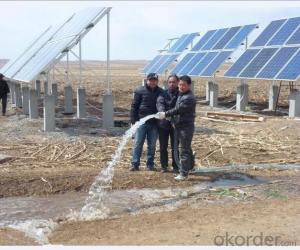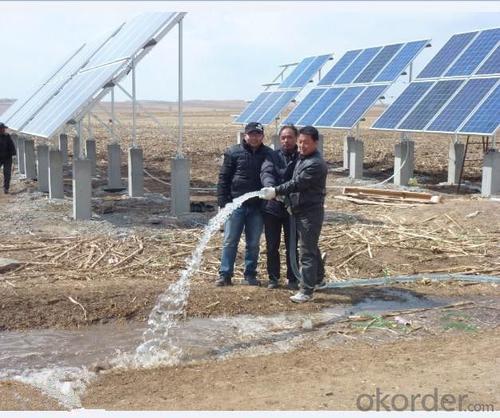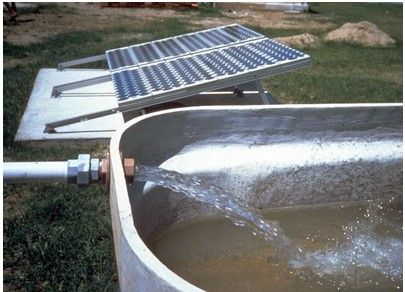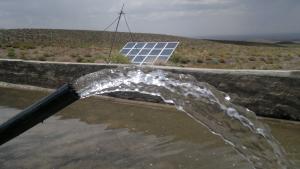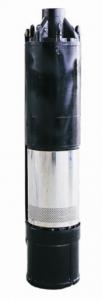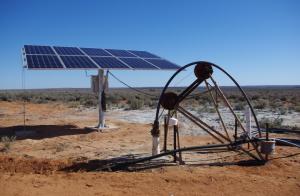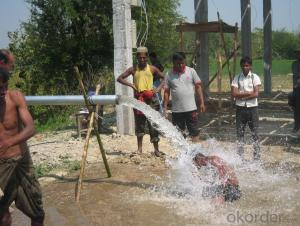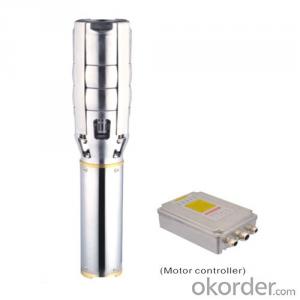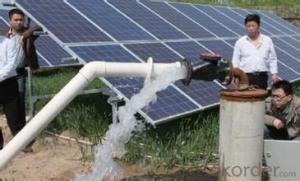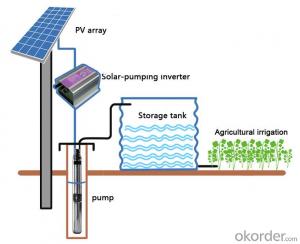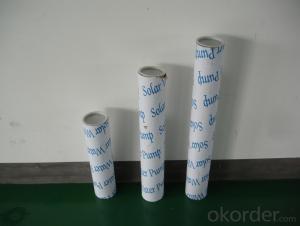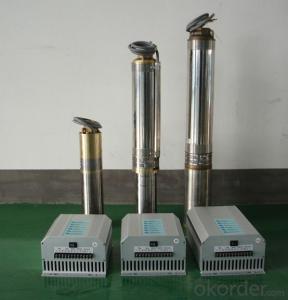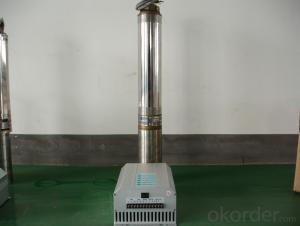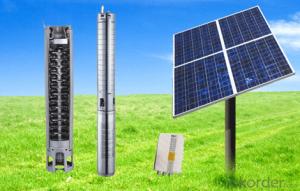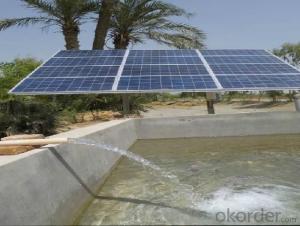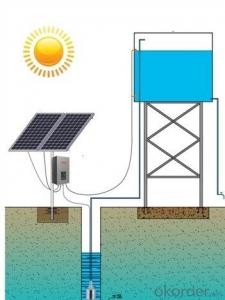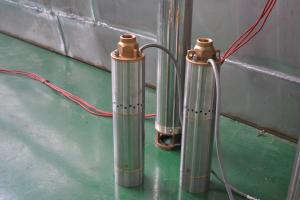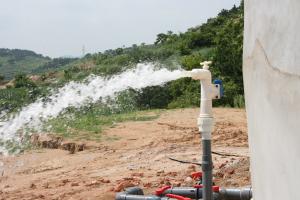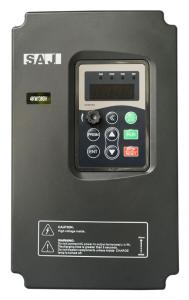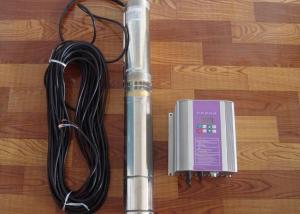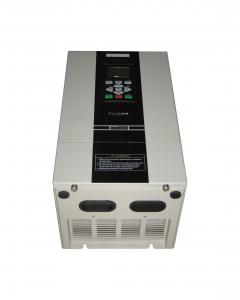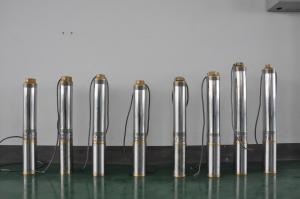12V Solar Water Pump DIY Solar Water Heater for Small Fountain
- Loading Port:
- Shanghai
- Payment Terms:
- TT OR LC
- Min Order Qty:
- 1 set
- Supply Capability:
- 1000 set/month
OKorder Service Pledge
OKorder Financial Service
You Might Also Like
12V Solar Water Pump Diy Solar Water Heater
Feature
High Efficiency & High Reliability
DC Brushless Permanent Magnet Motor
Minimum Maintenance, long Service Life
Environment Friendly Materials, Lubricated Without Oil
Application
Village or Family Water Supply
Animal Drinking Water & Livestock Watering
Garden/Courtyard Irrigation
Swimming Pool
Water Supply for Bivouac or Camping Car
Water Supply for Remote Area
Automatic Control
Operate Automatically, No Need Watching
Maximum Power Point Tracking (MPPT)
Dry-run Protection
Advanced Technology
Applications Innovation
The efficiency of DC brushless permanent magnet motor has been increased up to 25% in comparison with traditional asynchronous motor.
Technology Innovation
Stator and rotor are sealed by environment friendly casting resin.Motor insulation resistance can be hold higher than 300MΩfor more than 10 years, which consumedly increased the security and reliability of the submersible motor.
Structure Innovation
Casting resign technology processed stator and rotor as well as the water lubricated bearing make the submersible pump environment friendly.
Outlet: Stainless steel
Pump body: Stainless steel
Motor body: Stainless steel
Impeller: Stainless steel
Features:
Water filled motor
Max. Head: 90m
Max. Immersion Depth: 200m
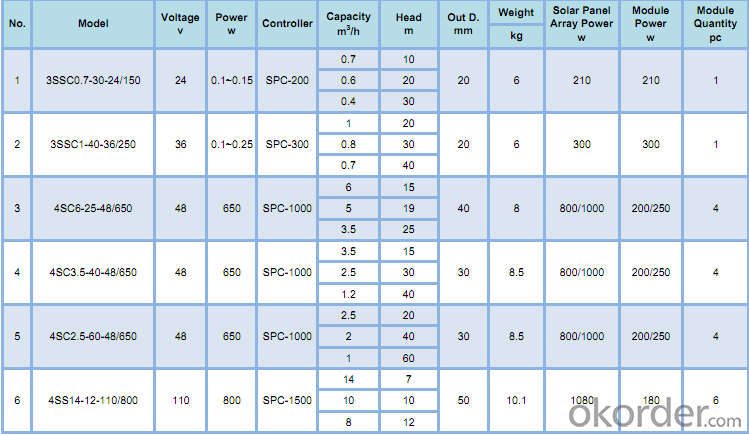
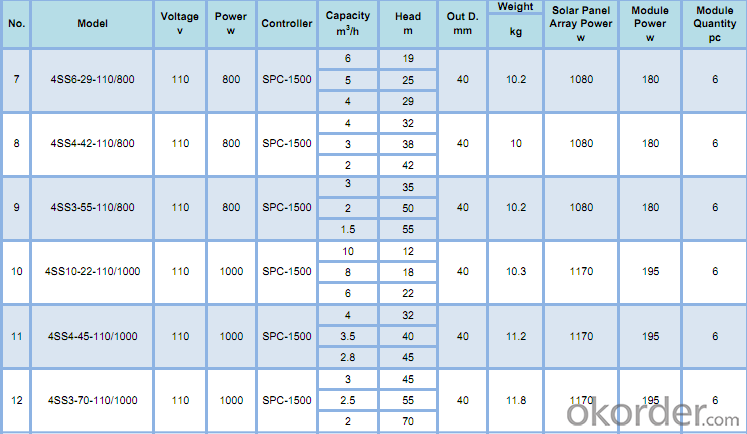
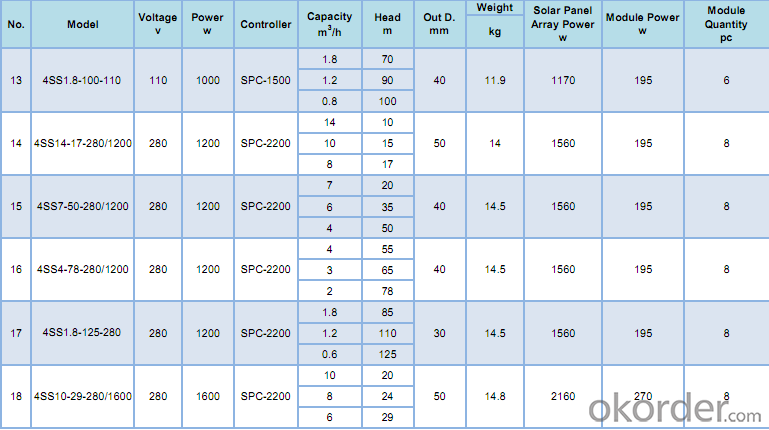
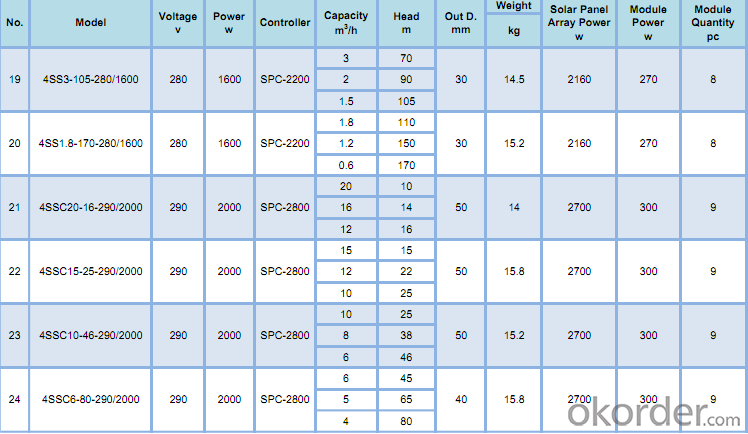
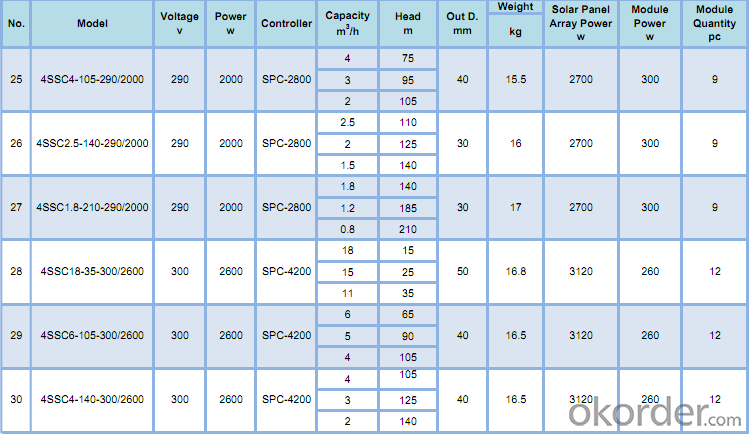
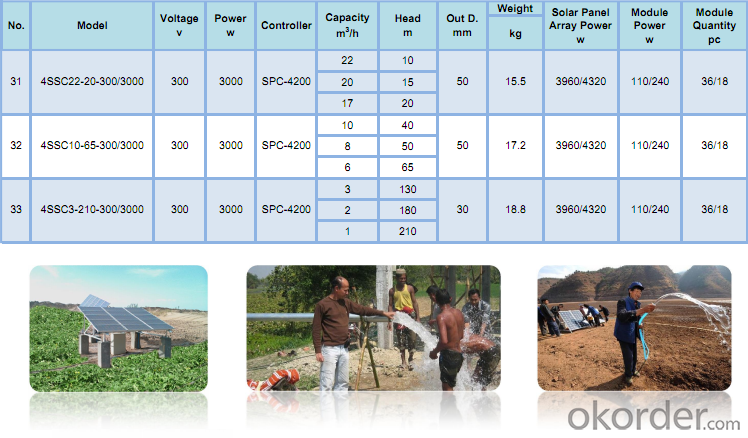
- Q: Can a solar pump be used in areas with limited access to reliable internet or communication networks for monitoring?
- Yes, a solar pump can be used in areas with limited access to reliable internet or communication networks for monitoring. Solar pumps are designed to operate independently of internet or communication networks. They typically rely on solar energy and do not require constant monitoring or connectivity for their basic functioning. However, in such areas, monitoring and maintenance tasks may need to be carried out manually or through alternative means, such as periodic site visits or using local communication systems like radio or satellite networks.
- Q: Are there any government incentives or subsidies for installing a solar pump?
- Installing a solar pump is eligible for government incentives and subsidies. Governments worldwide recognize the significance of renewable energy and the advantages of utilizing solar power for water pumping systems. These incentives and subsidies are designed to promote the adoption of solar pumps as an eco-friendly and sustainable alternative to traditional systems. The availability of specific incentives and subsidies may vary depending on the country or region. However, they typically include financial aid, tax credits, grants, and low-interest loans. For instance, in the United States, the federal government provides a federal investment tax credit (ITC) that enables individuals and businesses to deduct a portion of their solar pump installation costs from their federal taxes. Some states may even offer additional incentives alongside the federal ITC. Moreover, international organizations like the World Bank offer funding and support for solar pump installations in developing nations. These initiatives aim to enhance access to clean water and boost agricultural productivity in areas with unreliable or nonexistent electricity supply. To obtain detailed information about the incentives and subsidies available in your area, it is recommended to consult local government agencies, energy departments, or renewable energy associations. By taking advantage of these government programs, individuals and businesses can significantly reduce the initial expenses of installing a solar pump while contributing to a more sustainable future.
- Q: Are there any noise concerns with a solar pump?
- No, solar pumps are generally quiet and do not produce much noise.
- Q: Can a solar pump be used for livestock cooling systems?
- Yes, a solar pump can be used for livestock cooling systems. Solar pumps are designed to operate using energy from the sun, making them a sustainable and cost-effective option for various applications, including livestock cooling. These pumps can be used to circulate water through cooling systems that help regulate the temperature and provide relief to livestock during hot weather conditions. By harnessing the power of the sun, solar pumps offer an environmentally friendly alternative to traditional pumps, reducing electricity costs and minimizing the carbon footprint. Additionally, solar pumps are often low-maintenance and can be easily installed in remote locations, making them a practical choice for livestock cooling systems in rural areas.
- Q: How does the elevation of a location affect the performance of a solar pump?
- The elevation of a location can affect the performance of a solar pump due to its impact on atmospheric pressure. As elevation increases, atmospheric pressure decreases, resulting in lower boiling point of water. This can cause the pump to experience cavitation, which reduces its efficiency and output. Additionally, higher elevations might have colder temperatures, affecting the pump's ability to convert sunlight into energy. Therefore, it is crucial to consider the elevation when designing and operating a solar pump system for optimal performance.
- Q: What is the expected efficiency of a solar pump system in converting solar energy to mechanical energy?
- The expected efficiency of a solar pump system in converting solar energy to mechanical energy can vary depending on various factors such as the type and quality of the solar panels, the design of the pump system, and environmental conditions. However, on average, solar pump systems can achieve an efficiency of around 20-30%.
- Q: Can a solar pump be used for irrigation in saline soils?
- Yes, a solar pump can be used for irrigation in saline soils. Solar pumps are efficient and can be used to pump water from a source such as a well or a reservoir, regardless of the soil's salinity. However, it is important to consider the potential impact of saline water on the plants being irrigated and take appropriate measures to manage the salinity levels in the soil to ensure optimal crop growth and health.
- Q: What is the typical maintenance cost for a solar pump system?
- The maintenance cost of a solar pump system can differ based on several factors, including the system's size and type, location, and specific components used. However, in general, the maintenance cost of a solar pump system is relatively low in comparison to traditional pump systems. Typically, the primary maintenance activities for a solar pump system involve cleaning the solar panels, inspecting and maintaining the pump and motor, checking and replacing any worn or damaged parts (such as filters or seals), and ensuring the control system's proper functioning. The cost of these maintenance activities can vary from a few hundred to several thousand dollars annually, depending on the system's complexity and scale. It is also advisable to have regular professional inspections and servicing to ensure optimal performance and longevity, which may result in additional costs. It is worth noting that while the upfront installation cost of a solar pump system may be higher than that of a conventional pump system, the long-term savings in operation and maintenance can outweigh the initial investment. Furthermore, the utilization of renewable energy sources like solar power eliminates the need for fuel or electricity, resulting in significant cost savings over time.
- Q: What is the maximum suction lift a solar pump can handle?
- The maximum suction lift that a solar pump can handle depends on various factors such as the pump's design, power capacity, and the altitude of the installation site. Generally, solar pumps are capable of handling suction lifts up to 9 meters (30 feet), but it is recommended to consult the pump manufacturer's specifications for accurate information on the maximum suction lift capacity of a specific solar pump model.
- Q: Are there any safety concerns with using a solar pump?
- Yes, there can be safety concerns with using a solar pump. Some of the potential safety concerns include electric shock if not properly installed or maintained, overheating or fire hazards in extreme weather conditions, and potential for damage or injury due to improper handling or installation of the pump or its components. It is important to follow proper installation, maintenance, and usage guidelines provided by the manufacturer to ensure safe and efficient operation of the solar pump.
Send your message to us
12V Solar Water Pump DIY Solar Water Heater for Small Fountain
- Loading Port:
- Shanghai
- Payment Terms:
- TT OR LC
- Min Order Qty:
- 1 set
- Supply Capability:
- 1000 set/month
OKorder Service Pledge
OKorder Financial Service
Similar products
Hot products
Hot Searches
Related keywords
